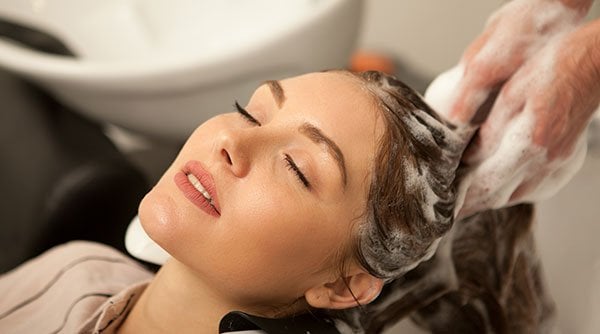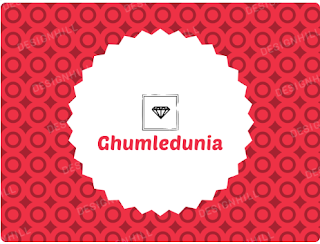Starting a beauty business can be an exciting and profitable venture, especially considering the continuous growth of the beauty industry worldwide. From skincare and cosmetics to hair care and wellness products, there is no shortage of opportunities to make your mark. However, as with any business, starting a beauty business requires careful planning, knowledge of the industry, and a clear strategy for success.
In this comprehensive guide, we will walk you through all the things to help you start your beauty business, from identifying your niche to launching and growing your brand.
1. Research the Beauty Industry
Before diving into the beauty business, you need to fully understand the market landscape. The beauty industry is vast, covering numerous sectors including skincare, cosmetics, hair care, fragrances, wellness, and beauty equipment. Here are some key points to research:
a. Industry Trends
Stay updated on the latest beauty trends to ensure your business is relevant. The beauty industry is highly influenced by consumer behavior, seasonal trends, celebrity endorsements, and technological advancements. For example, natural and organic products, cruelty-free beauty, and sustainable packaging have been growing trends. Researching these trends will help you determine where there is consumer demand.
b. Target Market
Identify who your target audience is. Are you catering to teenagers, professionals, older adults, or a specific ethnic group? Knowing your demographic helps you tailor your products and marketing strategies effectively.
c. Competitive Analysis
Analyze your competitors to understand what they are offering, their pricing strategy, and their marketing efforts. This will help you find gaps in the market or ways to improve your offerings.
2. Choose Your Niche
The beauty industry is crowded, so it’s crucial to carve out a niche for your business. Specializing in a specific segment helps you stand out and build a loyal customer base. Some niche categories to consider include:
- Skincare: Anti-aging products, acne treatments, natural skincare, or body care.
- Hair Care: Shampoos, conditioners, styling products, or hair extensions.
- Makeup: Cosmetics, makeup tools, or specialized beauty products.
- Beauty Services: Salons, makeup artistry, skincare treatments, or massage therapy.
- Beauty Accessories: Brushes, mirrors, hair accessories, etc.
- Eco-friendly/Organic Beauty: Products made from natural ingredients with minimal environmental impact.
Once you choose your niche, you will have a clearer focus for your brand, products, and target audience.
3. Create a Business Plan
A solid business plan is essential for the success of your beauty business. This document should outline your business objectives, marketing strategies, financial projections, and plans for scaling. Key components of your business plan include:
a. Executive Summary
Provide an overview of your business idea, including the products or services you plan to offer, your target market, and what sets you apart from competitors.
b. Market Analysis
Discuss your target audience, market trends, and competitor analysis. This section should show that you have a deep understanding of your market.
c. Business Model
Explain your business structure (e.g., online store, brick-and-mortar shop, or a combination), sales strategy, and revenue sources. Will you sell direct-to-consumer, wholesale, or both?
d. Financial Plan
Estimate your start-up costs, operational expenses, and revenue projections for the first few years. This will help you understand how much funding you need and when you can expect to break even.
4. Secure Funding
Starting a beauty business requires capital for product development, inventory, marketing, and other operational costs. Here are some common ways to secure funding:
a. Personal Savings
If you have sufficient personal savings, this can be a great way to fund your business without having to rely on outside investors or loans.
b. Loans or Grants
Consider applying for business loans or grants, especially if you have a well-developed business plan. Some banks or government programs offer financial assistance to new entrepreneurs.
c. Investors
Seek angel investors or venture capitalists who are interested in the beauty industry. This may require giving up a portion of your company’s ownership, but it can provide significant funding to help you scale quickly.
d. Crowdfunding
Platforms like Kickstarter or Indiegogo allow entrepreneurs to raise money by pre-selling products to future customers. This can also help validate your business idea before launching.
5. Register Your Business
Once you have secured funding, it’s time to make your business official. Registering your business legally ensures that you’re in compliance with all local and federal laws. This step typically includes:
Choosing a Business Name: Choose a name that reflects your brand and resonates with your target market. Make sure it’s unique and not already taken.
Business Structure: Decide on your business structure, such as a sole proprietorship, LLC, or corporation. Each has different legal and tax implications, so it’s important to choose the one that’s right for your goals.
Licenses and Permits: Depending on the type of beauty business, you may need specific licenses or permits, such as health department permits for a salon or spa.
Tax Identification Number (TIN): Apply for an Employer Identification Number (EIN) with the IRS if you’re in the U.S. This number is needed for tax purposes and hiring employees.
6. Develop Your Products
Product development is a crucial phase of your beauty business. The success of your business depends on offering high-quality, desirable products that meet customer needs. Here’s how to go about it:
a. Product Research and Development
Work with industry experts, chemists, or beauty formulators to develop your products. Conduct market research to understand what customers are looking for, and formulate your products based on those insights.
b. Sourcing Ingredients and Suppliers
Identify reliable suppliers for your ingredients or raw materials. Quality is essential, so look for suppliers that provide consistent and high-quality products.
c. Packaging Design
Packaging is a key element of beauty products. Invest in packaging that is both attractive and functional, as it can influence a customer’s purchasing decision. Consider eco-friendly or sustainable packaging to align with growing consumer demand for sustainability.
d. Testing and Safety
Ensure your products are tested for safety and efficacy. Depending on the type of products, you may need to comply with regulations set by governing bodies such as the FDA (U.S.) or EMA (European Union).
7. Build an Online Presence
In today’s time, an online presence is crucial for any business, especially in the beauty industry.
8. Launch Your Business
After preparing all the essential elements, it’s time to launch your beauty business. This is a critical stage as it sets the tone for your brand’s image. Consider the following launch strategies:
a. Pre-launch Campaign
Generate excitement by teasing your products before the official launch. Share sneak peeks, countdowns, and exclusive offers on social media and email.
b. Influencer Collaborations
Partner with beauty influencers to promote your brand to a larger audience. Influencers can offer testimonials and create content that reaches their loyal followers.
c. Launch Events
Host a virtual or physical launch event to celebrate the release of your products. This can be an opportunity to build buzz and drive early sales.
d. Promotions and Discounts
Offer limited-time discounts or bundle deals to entice customers to make their first purchase.
9. Focus on Customer Experience
Customer satisfaction is essential for building a successful beauty business. Strive to provide excellent customer service and ensure your customers feel valued. Here’s how:
- Fast Shipping: Ensure quick and reliable delivery times.
- Easy Returns: Implement a hassle-free return policy to build trust with customers.
- Personalized Experience: Use customer data to offer personalized recommendations and promotions.
10. Scale Your Beauty Business
Once your business is established, focus on scaling it. Here are some strategies for expansion:
- New Product Launches: Continuously introduce new products to keep your customers excited and engaged.
- Retail Partnerships: Expand your reach by partnering with retailers or launching in department stores.
- Global Expansion: If you’ve built a strong brand locally, consider expanding internationally to reach a larger audience.
Conclusion
Starting a beauty business is a rewarding journey, but it requires dedication, market insight, and strategic planning. By following these steps—researching the industry, choosing a niche, developing quality products, and marketing effectively—you can build a successful beauty business that resonates with customers and grows over time. Keep your customers at the forefront, adapt to trends, and stay focused on your goals to achieve lasting success in the beauty industry.










.jpeg)
.jpeg)


0 Comments
Inform me if you face any issue on the website